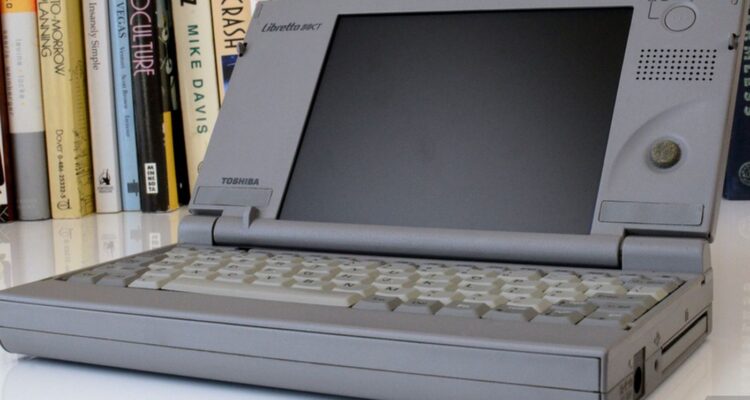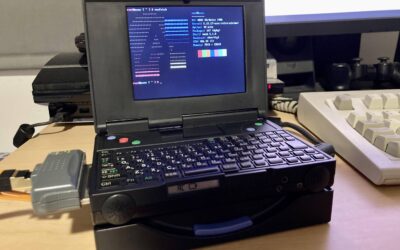In the early 1990s, the world of computing witnessed a significant breakthrough with the advent of the Toshiba Libretto. It was a groundbreaking series of subnotebook computers that challenged conventional ideas of portable computing and paved the way for the future of ultra-portable devices. The Libretto’s compact size, innovative features, and advanced technology made it a trailblazer in the market, capturing the imagination of tech enthusiasts and professionals alike. In this article, we will explore the history, features, and impact of the Toshiba Libretto on the evolution of modern laptops and portable computing.
Origins and History
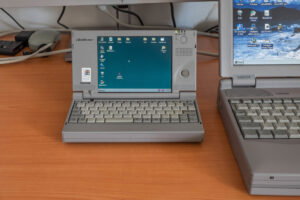
The Toshiba Libretto was first introduced in 1996 as the Libretto 20, designed to address the growing demand for ultra-portable laptops that could fit in the palm of your hand. It was a product of Toshiba’s vision to create a truly mobile computing experience. The Libretto series was named after the Italian word “libretto,” meaning “little book,” which aptly described the small size of these devices.
The Libretto was the brainchild of engineers at Toshiba, who were driven to miniaturize existing laptop technology without compromising on performance. This led to a series of innovative design decisions, which allowed them to pack powerful components into a compact form factor.
Key Features and Specifications
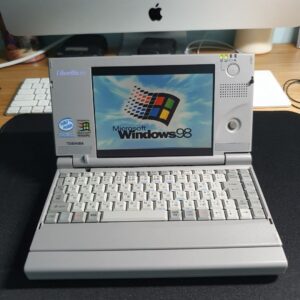
The Toshiba Libretto line of devices boasted numerous features that set them apart from the competition. Here are some of the key specifications of the early Libretto models:
- Compact Form Factor: The Libretto’s form factor was its most defining feature, measuring around 8.3 x 4.5 inches, and weighing merely 2.4 pounds. It was significantly smaller and lighter than any other laptop available at the time.
- Dual Display: The Libretto 50CT, released in 1997, had an innovative dual-display design. Users could slide the top screen to reveal a secondary display and effectively double their screen real estate, a concept that was ahead of its time.
- Performance: Despite its small size, the Libretto was equipped with impressive hardware. Early models featured Intel Pentium processors and adequate RAM to handle essential computing tasks efficiently.
- Connectivity: The Libretto included various connectivity options such as USB ports, PCMCIA slots, and external VGA ports, enabling users to connect to peripherals and external displays.
- Input Methods: Due to its compact size, conventional laptop input methods were impractical. Toshiba implemented a trackball and a small QWERTY keyboard, though later models featured more ergonomic solutions.
- Operating Systems: The Libretto series initially ran on Windows 95 and later versions, catering to users who required the familiarity of a full-fledged desktop operating system.
Impact on Computing
The Toshiba Libretto’s introduction sparked a revolution in the world of portable computing. While the initial models faced some limitations, the concept of an ultra-portable laptop intrigued consumers and manufacturers alike. The success of the Libretto series opened the doors for other companies to explore the possibilities of ultra-portable computing.
Subsequent iterations of the Libretto continued to push the boundaries of technology. These devices showcased advancements in processor technology, battery life, and display resolutions, making them increasingly attractive to on-the-go professionals and business travelers. Other companies soon followed suit, launching their own versions of ultra-portable laptops, leading to a thriving market segment.
The Influence on Modern Laptops
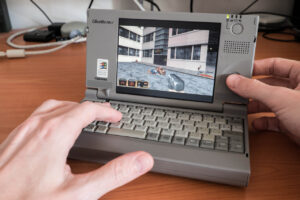
The influence of the Toshiba Libretto can still be felt in today’s ultra-portable laptops and 2-in-1 devices. The compact form factor, once considered groundbreaking, has become standard in devices like ultrabooks and tablets. Furthermore, the concept of a dual-screen setup, first seen in the Libretto 50CT, has been revisited and integrated into modern foldable devices and dual-screen laptops.
The Libretto’s impact extends beyond hardware design. It also played a role in shaping consumer expectations for portable devices. The desire for thinner, lighter, and more powerful laptops emerged from the success of the Libretto series, influencing subsequent trends in the laptop industry.
The Toshiba Libretto remains a significant milestone in the history of computing. Its innovative design and cutting-edge technology challenged the conventions of portable computing and laid the groundwork for the future of ultra-portable laptops. The Libretto’s legacy can be seen in the modern-day devices we use today, as it inspired an entire industry to prioritize portability without compromising on performance.
As we look back on the Toshiba Libretto, we recognize its role as a trailblazer in the evolution of laptops, leaving an indelible mark on the world of computing and inspiring future generations of engineers and designers to push the boundaries of technology and redefine the possibilities of portable computing.

